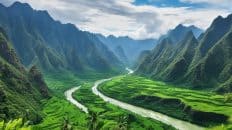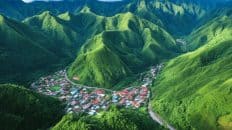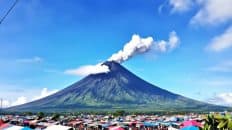When you think of the Philippines, images of pristine beaches, verdant mountains, and colorful festivals likely come to mind. This archipelago boasts not only a rich cultural heritage but also a fascinating climate. If you’re planning to visit or just want to understand more about this Southeast Asian paradise, it’s crucial to grasp the intricacies of its weather and climate. Let’s dive deep into what you can expect from the Philippines’ skies and shores.
Geographical Overview
The Philippines is located in Southeast Asia, lying between the equator and the Tropic of Cancer. This strategic positioning grants it a tropical maritime climate characterized by high temperature, humidity, and significant rainfall. The Philippine archipelago is divided into three island groups: Luzon in the north, Visayas in the middle, and Mindanao in the south. Each region experiences slight climatic variations due to its geographical location and topography.

General Climate Patterns
The climate of the Philippines is typically broken down into two main seasons:
- Rainy or Wet season (June to November): Coinciding with the southwest monsoon or ‘Habagat’. Expect torrential rain, particularly from July to September.
- Dry season (December to May): The northeast monsoon or ‘Amihan’ brings cooler air from December to February and hotter conditions from March to May.
Temperature and Humidity
Temperature: Averaging at about 79°F (26°C) for the year, the Philippines is warm. The cooler months, December to February, see temperatures from 78°F to 98°F (25°C to 37°C) in the daytime. March to May, the hottest months, can reach up to 100°F (38°C) in some areas.
Humidity: With an average yearly humidity of about 77%, the country can feel quite sticky, especially during the rainy season when moisture levels peak.
Regional Variations
- Luzon: The largest island group and home to the capital, Manila, Luzon experiences heavy rainfall from the southwest monsoon. The Bicol region, located in the southeast of Luzon, frequently gets typhoons due to its geographical position.
- Visayas: Central Philippines sees less rain than Luzon but is still susceptible to typhoons. Cities like Cebu might have more predictable weather patterns, with clear delineations between wet and dry seasons.
- Mindanao: Generally, Mindanao receives a more evenly distributed rainfall throughout the year. It’s less affected by typhoons, but localized rain showers are common.
Typhoons
A significant climatic challenge for the Philippines is typhoons. The country is hit by an average of 20 typhoons annually, with most occurring from June to October. These can cause severe flooding, landslides, and sometimes result in loss of life and property.
Best Times to Visit
For travelers, the dry season, especially between December and February, is the best time to visit. The weather is cooler, and there’s a lower chance of rainfall disrupting your plans. If you’re targeting festivals, Sinulog in Cebu (January) and Panagbenga in Baguio (February) are celebrated during these months.
Adapting to the Climate
- Stay Hydrated: The combination of heat and humidity can be draining. Always carry water with you.
- Sun Protection: Whether it’s the dry or wet season, the sun can be intense. Use sunscreen, wear hats, and try to stay out of direct sunlight during peak hours.
- Rain Gear: If traveling during the rainy season, waterproof bags, jackets, and footwear can be lifesavers.
- Stay Updated: Especially during the typhoon season, keep an eye on weather updates.
The Climate’s Impact on Culture and Lifestyle
The Philippines’ climate has deeply influenced its culture and way of life:
- Festivals: Many Philippine festivals, like Pahiyas and Ati-Atihan, are associated with giving thanks for bountiful harvests, which is directly tied to the climate.
- Clothing: Traditional Filipino clothing, like the lightweight Barong Tagalog, reflects the need to stay cool in the hot and humid climate.
- Architecture: The Bahay Kubo, a traditional Filipino house, is elevated and made of materials like bamboo, allowing for better air circulation.
Climate Change and Its Impacts
Sadly, the Philippines is not exempt from the effects of climate change. Rising sea levels and more intense typhoons pose significant threats. Many initiatives are now in place to combat these challenges, from mangrove reforestation to sustainable farming techniques.
The Philippines, with its tropical maritime climate, promises a warm experience—both in temperature and the hospitality of its people. While the weather can be unpredictable, understanding its patterns can undoubtedly help in making the most of your visit or stay. Whether you’re basking under the sun on a beach in Palawan or enjoying the cooler breeze of the Cordillera mountains in Luzon, the Philippines offers a climatic adventure like no other.


















Add comment